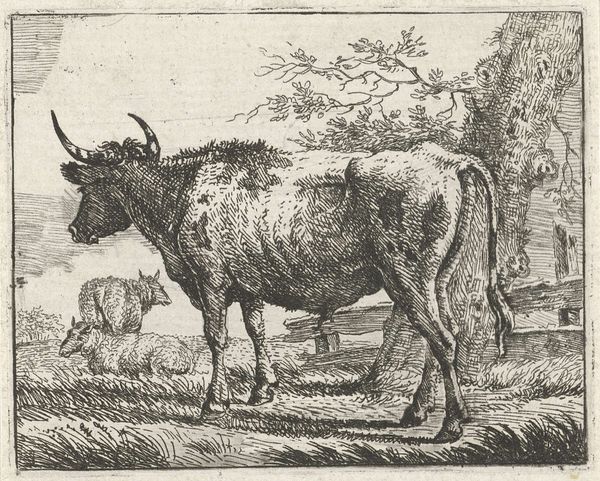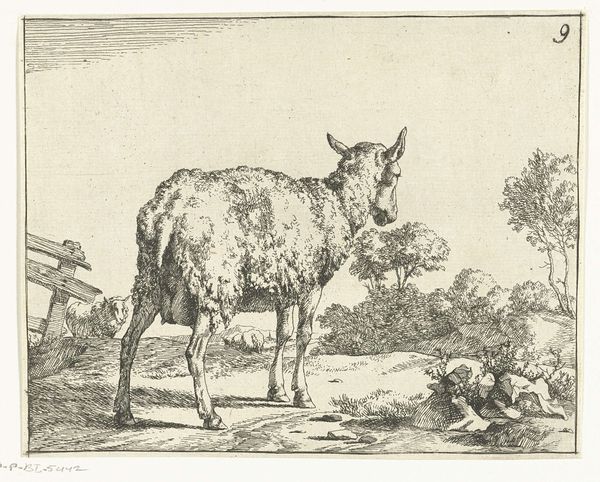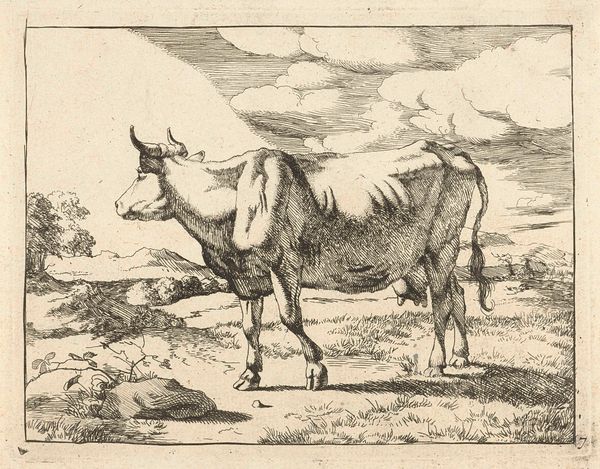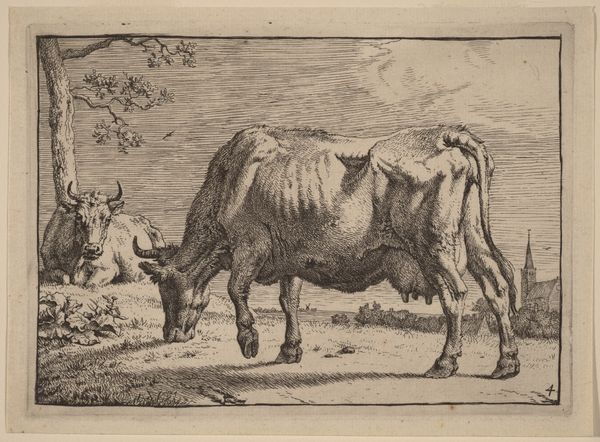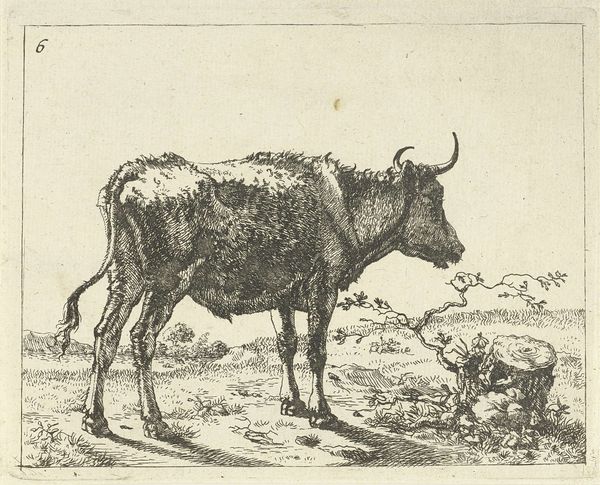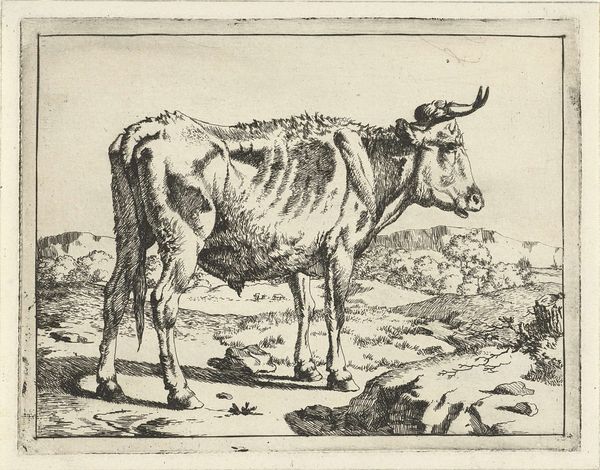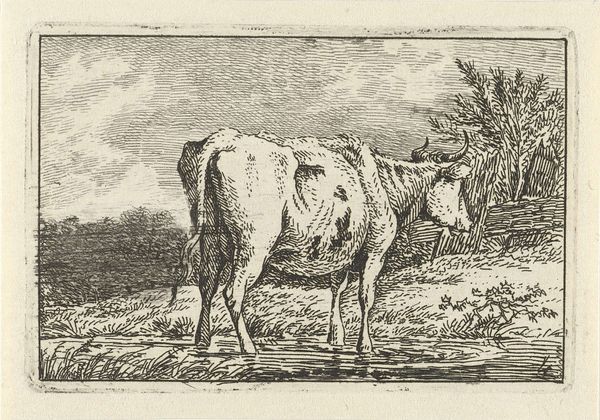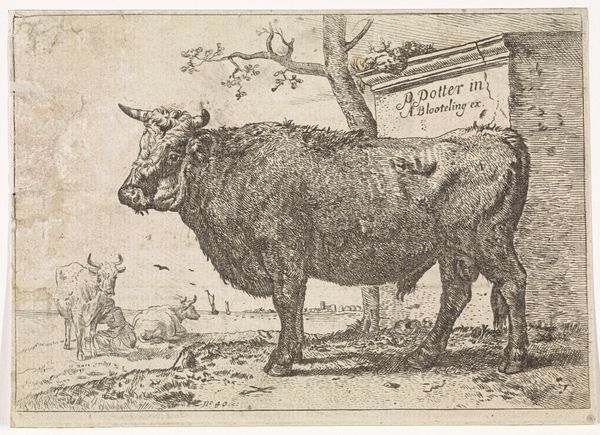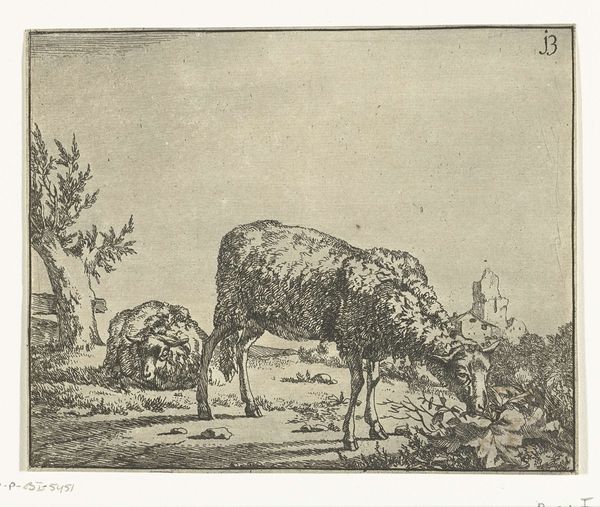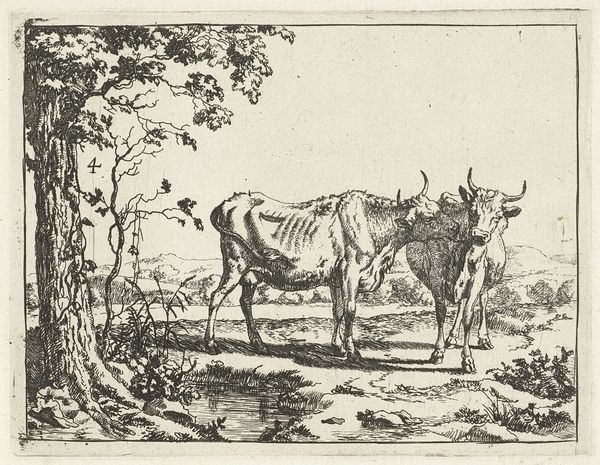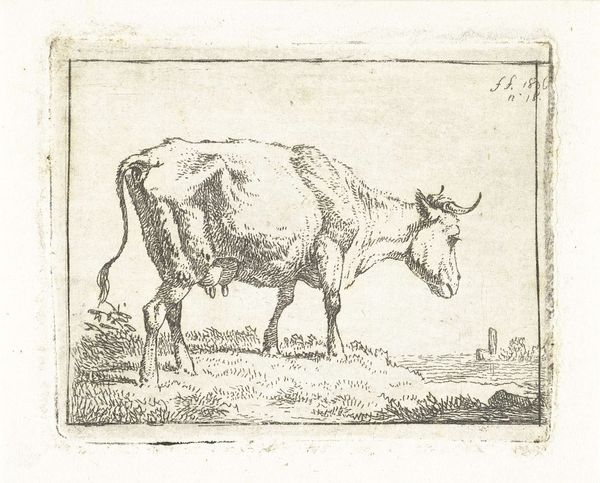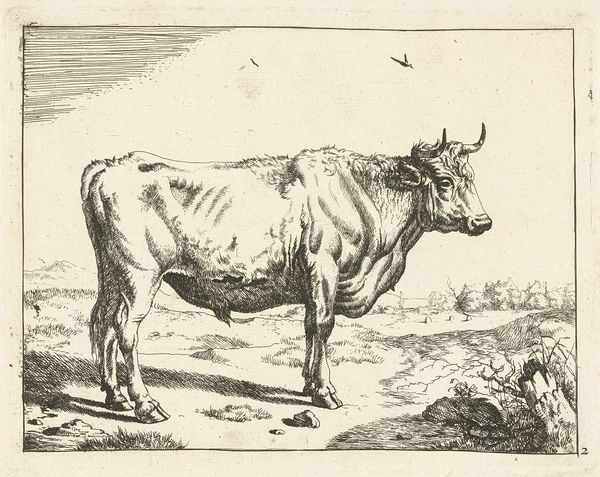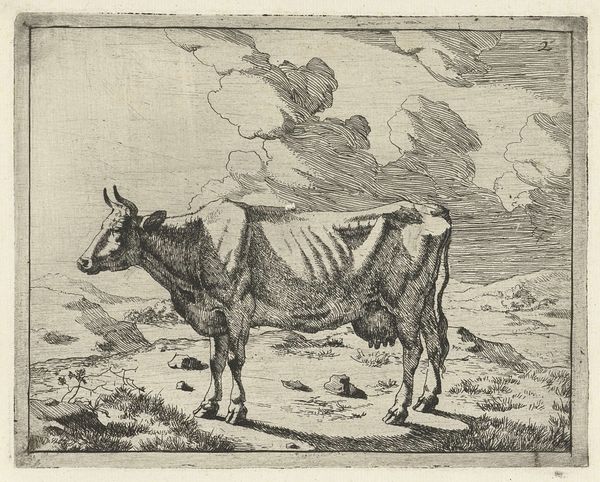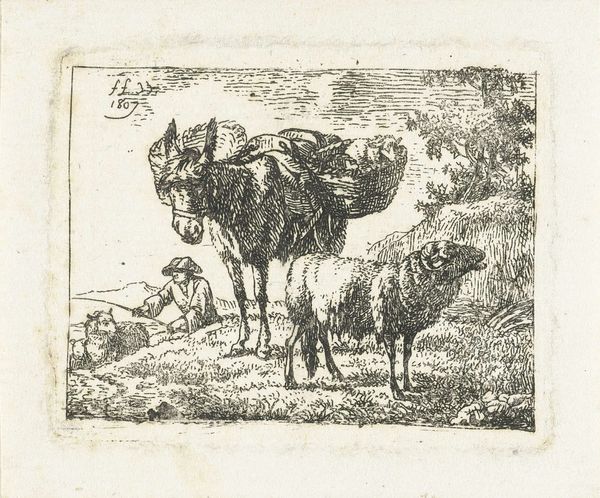
print, engraving
#
animal
#
dutch-golden-age
# print
#
old engraving style
#
landscape
#
figuration
#
engraving
Dimensions: height 120 mm, width 149 mm
Copyright: Rijks Museum: Open Domain
Curator: Let's discuss this striking print, "Standing Goat Seen from Behind," dating from around 1657-1677, currently housed in the Rijksmuseum. It's an engraving by Marcus de Bye, rendering a goat within a rudimentary landscape. Editor: My first impression is how meticulously the animal’s fur is rendered, contrasting sharply with the stark simplicity of its surroundings. There's a certain nobility conferred on this rather ordinary creature. Curator: It's fascinating how the Dutch Golden Age embraced depictions of the everyday. The presence of livestock held great importance. In that era, agriculture and animal husbandry weren’t merely economic activities; they were fundamental to the social structure and cultural identity of the Netherlands. Editor: Absolutely, and considering the goat's association with virility and, at times, mischievousness, I wonder if de Bye isn't also hinting at broader themes of natural impulse. Note how he emphasizes the creature’s strong neck and prominent horns, framing the subject by stark light. Curator: It's true, artists of this time, while depicting realism, were very mindful of imbuing their works with subtle layers of meaning that reflect the cultural sensibilities. In the 17th century Netherlands, this emphasis on everyday subject matter also paralleled burgeoning ideas about class, labor, and emerging market economies. The rising merchant class certainly was interested in pastoral settings, but from an angle showing hard work. Editor: Interesting you point that out because my feeling is one of playful reverence, contrasting nicely with what one expects for images with religious subject matter during those periods. This simple scene creates an experience that goes back to the first gods and demigods that are frequently symbolized with animals. Curator: The work itself highlights a shift in the artistic and economic landscapes of the Dutch Republic. Prints like this circulated widely, appealing to a growing market keen to own a slice of art. This contrasts with earlier periods where patronage was concentrated around the wealthy and elite. Editor: A point well-made. The engraving here is much more than mere artistic demonstration or recording of a particular era; de Bye evokes potent primal sentiments, and, ultimately, feelings about a shared, collective origin that far exceed the individual in scope and temporal scale. Curator: Indeed. Understanding these elements offers an opportunity to go beyond what one can initially see in it. Thank you for this enriching interpretation. Editor: My pleasure. What initially looks simple transforms into a nuanced look at culture.
Comments
No comments
Be the first to comment and join the conversation on the ultimate creative platform.
